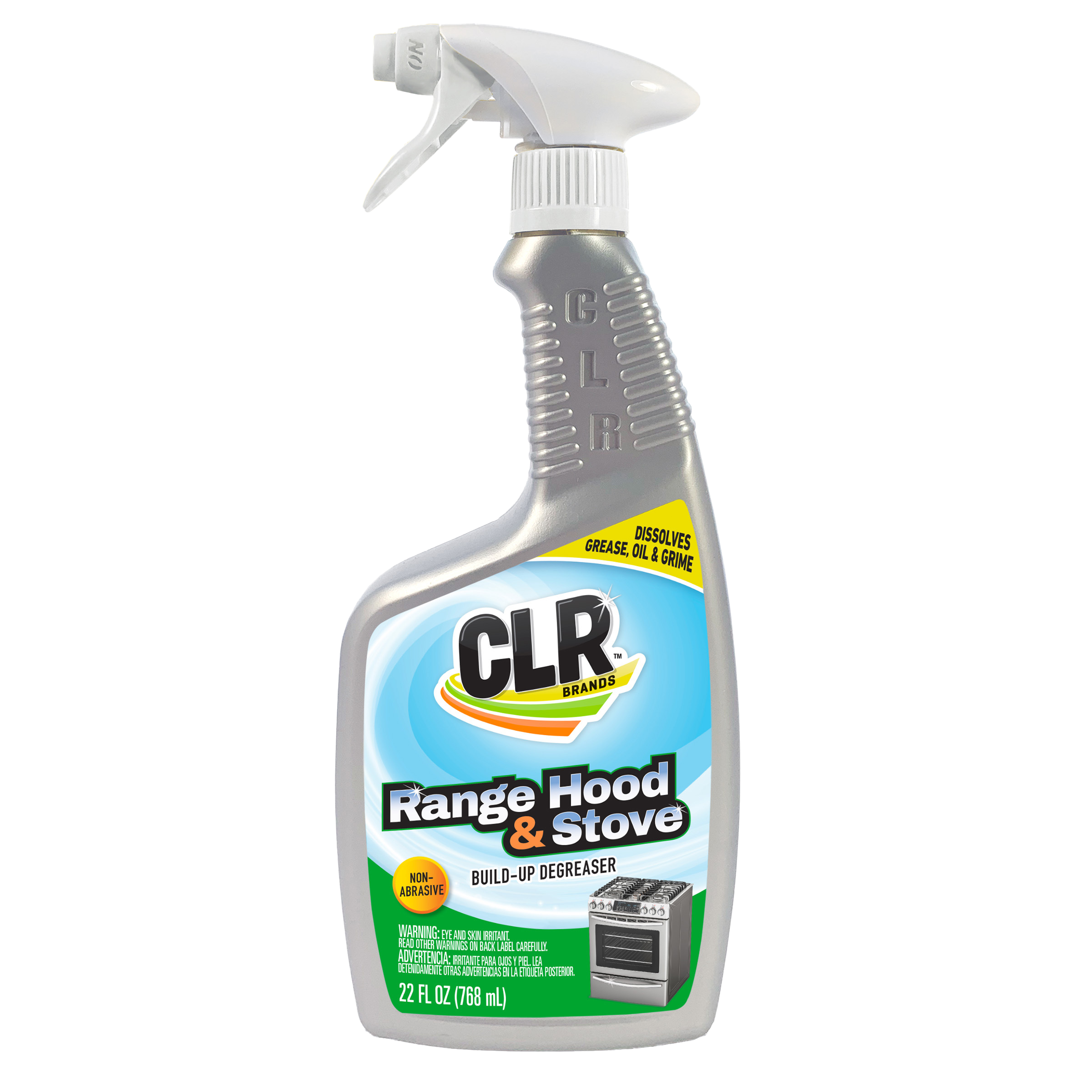
Range Hood & Stove
- Fast-acting, powerful degreaser formulated to quickly clean baked on foods, counters, stove tops, oven racks, sinks, grease and tar from terrazzo, stone floors, range hoods, stainless steel, glass stove tops, porcelain, and ceramic.
- Non-abrasive buildup degreaser that dissolves grease, oil and grime.
Look for Range Hood & Stove in these sizes
- 22 oz. spray
For use on these surfaces
- Ceramic
- Glass Stove Tops
- Granite
- Porcelain
- Range Hood
- Stainless Steel
- Terrazzo
More information
How to use this product
- Wipe, scrape, brush or sweep off loose, heavy, charred deposits.
- Test a small, hidden area first before cleaning entire surface.
- Spray on full strength. Clean an area no larger than 12" x 12" at one time.
- Let soak for 1-5 minutes (depending on size and difficulty of stain).
- Clean with sponge, scouring pad, brush or broom until stain is loosened.
- Rinse at once with cool clean water.
- Repeat above process if necessary. *For exterior use, water grass or shrubs within cleaning area before using Range Hood & Stove. Rinse grass and shrubs well after cleaning.
Product ingredients


| Water | Dilutent: CAS #7732-18-5 |
|
|
| Dilutent: CAS #7732-18-5. Reverse Osmosis (RO) is a water treatment process that removes contaminants from water by passing the water through a membrane, (filter), where contaminants are filtered out yielding more pure quality water. | |||
| C9-11 Alcohols Ethoxylated | Surfactant: CAS #68439-46-3. |
|
|
|
Surfactant: CAS #68439-46-3. It is used in cleaners to modify the surface tension of water, to aid in even spreading and to allow mixing with oil and dirt so that they can be rinsed away. As part of the EPA Safer Choice Program, it has been evaluated and determined to be safer than traditional chemical ingredients. California CPRKA Designated Lists (3) EU Endocrine Disruptors. https://echa.europa.eu/candidate-list-table (16) California NLs. https://oehha.ca.gov/water/notification-levels-chemicals-drinking-water (18) California TACs. https://ww3.arb.ca.gov/toxics/id/taclist.htm (20) California Non-Cancer Hazards. https://oehha.ca.gov/air/general-info/oehha-acute-8-hour-and-chronic-reference-exposure-level-rel-summary |
|||
| Sodium Metasilicate Pentahydrate | Builder: CAS #6834-92-0 |
|
|
|
Builder: CAS #6834-92-0. A strong oxidizer. As a component in a chemical degreaser, it reacts with fatty acids (animal grease) to form a soap, which is then rinsed away. As part of the EPA Safer Choice Program, it has been evaluated and determined to be safer than traditional chemical ingredients. California CPRKA Designated Lists (7) Canada PBTs. https://www.canada.ca/en/environment-climate-change/services/canadian-environmental-protection-act-registry/substances-list/domestic.html (9) IARC Carcinogens. https://monographs.iarc.fr/agents-classified-by-the-iarc/ |
|||
| Sodium Xylene Sulfonate | Coupling Agent: CAS #1300-72-7. |
|
|
|
Coupling Agent: CAS #1300-72-7. An organic compound that increases the ability of water to dissolve other molecules. It is also found in personal care products as a surfactant, to modify the surface tension of water, to aid in even spreading and to allow mixing with oil and dirt so that they can be rinsed away. As part of the EPA Safer Choice Program, it has been evaluated and determined to be safer than traditional chemical ingredients. California CPRKA Designated Lists (4) IRIS Neurotoxicants. https://cfpub.epa.gov/ncea/iris/search/index.cfm?sys_joint=11 (10) ATSDR Neurotoxicants. https://www.atsdr.cdc.gov/substances/toxorganlisting.asp?sysid=18 (17) California MCLs. https://govt.westlaw.com/calregs/Document/I2810C4E12DCC4B40A16 (18) California TACs. https://ww3.arb.ca.gov/toxics/id/taclist.htm |
|||
| Ethylenediaminetetracetic Acid Dipotassium Salt Dihydrate | Chelating Agent: CAS #25102-12-9. |
|
|
| Chelating Agent: CAS #25102-12-9. | |||
FAQs
How long can I leave Range Hood & Stove on a stain before rinsing?
Range Hood & Stove should only be left on a surface 1-5 minutes then rinsed off with cool clean water. If the stain persists, repeat the process.
How do I use Range Hood & Stove?
To use Range Hood & Stove, sweep the area clean of heavy dirt and dust. For stains such as tar or heavy grease, scrape off as much as possible with a putty knife before cleaning. While wearing household rubber gloves, test a small, hidden area of the surface first before cleaning the main area. Pour or brush full strength to an area no larger than 12" x 12". Depending on size and difficulty of the stain, let the solution soak for one to five minutes. Clean the area with a clean brush or broom until the stain is loosened. Rinse at once with cool, clean water. Repeat the process if necessary. Do not use Range Hood & Stove with any other cleaners, bleaches or acids. If cleaning near grass or shrubs, rinse the grass and shrubs before and after cleaning.
What will happen if I leave Range Hood & Stove on too long?
If Range Hood & Stove is left on too long and begins to dry, it can be very difficult to remove.
